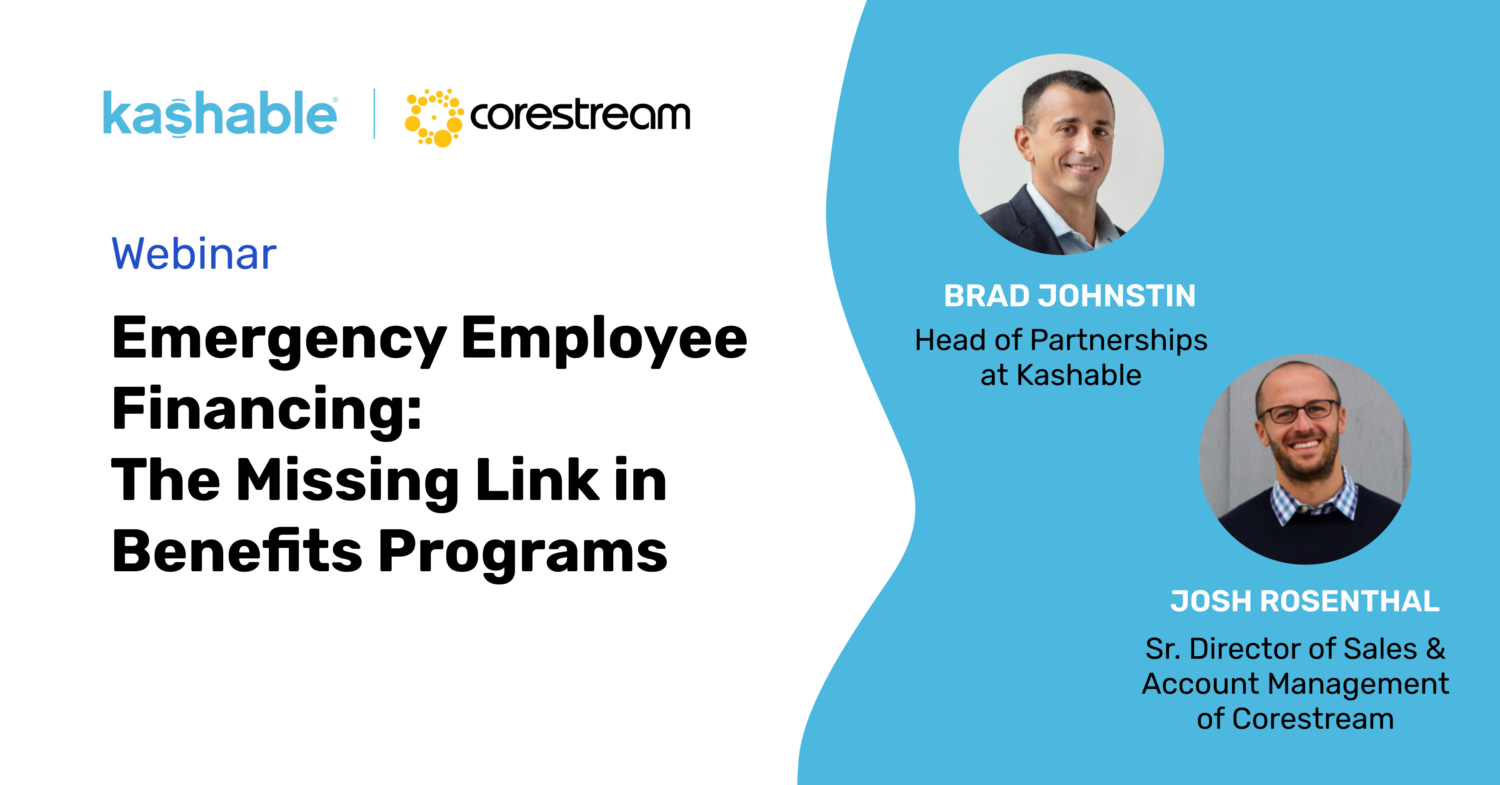
A recent survey found that 73% of Americans are saving less for emergencies due to rising consumer prices, higher interest rates, and shifts in income or employment. Just 41% of Americans could cover an unexpected $1,000 emergency expense using their savings.
To discuss this pressing issue, Josh Rosenthal, Senior Director of Sales and Account Management at Corestream, and Brad Johnstin, Head of Partnerships at Kashable, sat down for a webinar. Their conversation explored debt management, financial coaching, emergency employee funding, and the financial challenges many Americans face today. Here are the key takeaways.
Employees Aren’t Bad Actors—They Lack Better Solutions
A sudden hospital bill or an unexpected car repair can force employees to turn to high-interest credit cards or payday loans—not because they want to, but because they have no alternative.
Johnstin emphasized, “They just lack options.” This lack of access to affordable credit traps many in a cycle of debt, making financial stability harder to achieve.
- 16% of Americans are considered credit invisible, meaning they don’t have a credit score and struggle to access traditional credit.
- 35% of Americans are classified as subprime, limiting their ability to secure loans from banks or credit unions.
Traditional lending models often rely solely on credit scores, overlooking key factors that determine financial reliability. Kashable takes a different approach—instead of just looking at credit scores, it considers employment stability, payroll data, and other indicators of financial risk. This allows Kashable to offer lower-cost loans to employees, providing an alternative to predatory lending options.
Johnstin highlighted the significance of this shift, stating, “For many employees, this is the first time in their life they have access to low-cost credit—allowing them to repay through payroll while also building their credit score.”
Beyond the Immediate Financial Need
While Kashable helps employees cover emergency expenses, its impact doesn’t stop there. The program also provides long-term financial support, including:
- Live financial coaching to help employees make informed money decisions.
- Free credit monitoring to track and understand credit score changes.
- Access to savings and checking accounts to encourage long-term financial stability.
Financial literacy is a major gap—50% of U.S. adults lack basic financial knowledge in areas like debt management and credit scores. Kashable helps employees move from borrowers to savers, creating a lasting impact on their financial future.
A Win for Employers, Too
Kashable isn’t just beneficial for employees—it’s also a powerful tool for employers. More than 400 employers, including Fortune 500 companies, state governments, public sector organizations, and school districts, have adopted Kashable as part of their benefits offerings.
Financial stress is a major concern for employees, ranking just below health-related stress. By providing a solution like Kashable, employers can help reduce financial anxiety, improve employee well-being, and enhance productivity—all at no significant cost to the company.
Watch the Full Webinar
Want to learn more? Watch the full webinar to hear real success stories and see how employers are transforming financial well-being for their workforce. It’s an eye-opening discussion on how responsible financing solutions can bridge the gap between financial stress and long-term stability.
